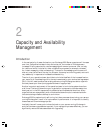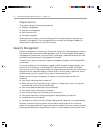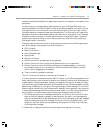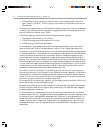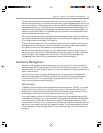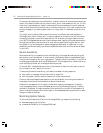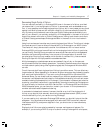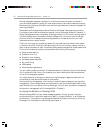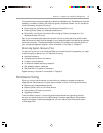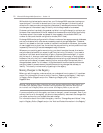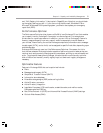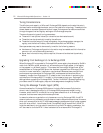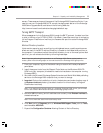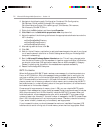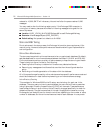
Chapter 2: Capacity and Availability Management 19
One area where you can guard against problems is database errors. Database errors can be
caused by a number of factors, but they are typically hardware related. You will be able to
minimize these by doing the following:
◆ Ensure that your hardware is on the Hardware Compatibility List
◆ Checking Event Viewer for database-related errors
◆ Periodically running the Information Store Integrity Checker (isinteg.exe) on the
database to check for errors
Part of your maintenance program should also include routinely searching the Microsoft
Web site (www.microsoft.com/exchange) for any issues that need to be resolved by patches
and/or service packs. The patches and service packs will be tested and recorded as part of
your change-management program, which is covered in more detail in Chapter 3.
Minimizing System Recovery Time
To recover from failure in an Exchange 2000 environment as quickly as possible, you need
to be thoroughly prepared. You will need the following:
◆ Available hardware
◆ Complete configuration information
◆ A recent, working backup
◆ An effective disaster-recovery procedure
◆ Fast access to support resources
◆ Staff availability to perform the restore
System recovery is covered in more detail in Chapter 5.
Performance Tuning
When you tune for performance, you are aiming to reduce your system’s transaction
response time. Performance tuning can take a number of forms, including the following:
◆ Balancing workloads between servers
◆ Balancing disk traffic on individual servers
◆ Using memory efficiently on servers
◆ Upgrading hardware
The most effective factor in improving performance comes from upgrading the hard-
ware on your servers that are running Exchange. However, regardless of the hardware,
there are a number of software changes that you can make to maximize the efficiency
of Exchange 2000.



